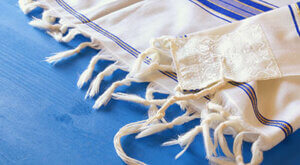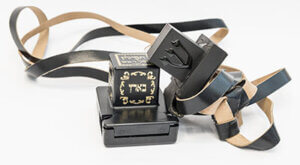“Next Year in Jerusalem!” A Call of Hope
I’ll never forget the first time I visited Israel. After spending several days touring Tel Aviv, the Dead Sea, and the Sea of Galilee, it was finally time to go up to Jerusalem.
And up we went! I did not realize how high Jerusalem sat until our tour bus climbed the winding highway. We rounded a corner, and as the color of the buildings began to change to a golden stone, I heard crying. A precious Jewish woman seated behind me was seeing the holy city for the first time. I was humbled as I quietly listened to her tell her husband how her father and uncle died before setting their eyes on the city they longed for. She said, “‘Next year in Jerusalem’ is what we said every year at Passover. And here I am—how do I deserve this?”
Through the Jewish people’s hard work and God’s blessings, swamps and barren land were transformed into life, just as Scripture foretold.
I visited Israel for the same reason most Christians do: to walk where my Savior walked and to see where the Bible stories I had heard my entire life happened. I wanted to experience the modern State of Israel. Through the Jewish people’s hard work and God’s blessings, swamps and barren land were transformed into life, just as Scripture foretold (Isaiah 35:1).
However, the Jewish people’s desire for Israel is special. Their hearts are forever knit to this land because of God’s everlasting covenant with them.
A Time to Remember
Every spring, as we prepare to celebrate Easter, the Jewish people prepare for Passover. As Christians rejoice in hope and celebrate Jesus the Messiah, who came and died for man’s sins, rose on the third day, and promised to return one day, the Jewish people gather to remember and celebrate God delivering them from Egypt and leading them to the Promised Land. Both Christians and Jewish people are waiting for the Messiah to come for His own.
If you ever had the privilege of attending a Passover Seder, you know it is a richly symbolic meal. Participants journey through the Israelites’ Exodus with four cups that symbolize the four “I wills” God promised them in Exodus 6:6–7:
1. The cup of sanctification: “I will bring you out from under the burdens of the Egyptians.”
2. The cup of praise: “I will rescue you from their bondage.”
3. The cup of redemption: “I will redeem you with an outstretched arm and with great judgments.”
4. The cup of acceptance: “I will take you as My people, and I will be your God.”
God makes one more, two-pronged “I will” statement: “I will bring you into the land which I swore to give to Abraham, Isaac, and Jacob; and I will give it to you as a heritage: I am the Lord.” (v. 8). Some call this last cup the cup of hope, or the cup of Elijah, as the prophet Malachi wrote, “Behold, I will send you Elijah the prophet before the coming of the great and dreadful day of the Lord. And he will turn the hearts of the fathers to their children, and the hearts of the children to their fathers, lest I come and strike the earth with a curse” (Malachi 4:5–6). Jewish tradition teaches that the prophet Elijah will signal the Messiah’s coming. The Passover table reserves an empty place setting and cup in hope that Elijah will appear and the Messiah will come for His people.
A Cry of Hope
God commanded the Israelites to observe Passover as a time of remembrance: “So you shall observe the Feast of Unleavened Bread, for on this same day I will have brought your armies out of the land of Egypt. Therefore you shall observe this day throughout your generations as an everlasting ordinance” (Exodus 12:17). It is also a time of hopeful anticipation. At the end of the Seder meal, it is customary to say together, “Next year in Jerusalem!”, or in Hebrew, “L’shana ha-ba’a bi-Yerushala’yim!”
This cry may seem strange to us living in a post-1948 world. Before the establishment of the modern State of Israel, the Jewish people could only dream of returning home to their Promised Land. Today, millions of Jewish people proclaim, “L’shana ha-ba’a bi-Yerushala’yim!”, while sitting in the actual city! So does that mean the cries of their hearts are satisfied? Not quite
The Jewish people long for the day the Prince of Peace will set His feet upon the Mount of Olives and bring shalom: true, lasting peace.
If you walk down Jerusalem’s streets and ask what “L’shana ha-ba’a bi-Yerushala’yim!” means, you might receive as many different answers as people. Many, like the precious woman I heard on my tour bus, are visiting the land they have read about, prayed over, and longed for. The more religious may explain that the Temple, not Jerusalem itself, has yet to be rebuilt. Scripture says a future Temple is coming where the glory of God will return (Ezekiel 40—48). However, a more secular Jewish person would probably say the phrase is a “state of mind” and a message of future peace. Whatever their answer, “next year in Jerusalem” is a cry of hope and anticipation. God is calling the Jewish people back to their land, just as Scripture promised.
As the Jewish people sit together in the coming weeks to celebrate and remember the Passover all over the world, they will end their time together reading this Psalm of Ascent (126):
When the Lord brought back the captivity of Zion, we were like those who dream. Then our mouth was filled with laughter, and our tongue with singing. Then they said among the nations, “The Lord has done great things for them.” The Lord has done great things for us, and we are glad. Bring back our captivity, O Lord, as the streams in the South. Those who sow in tears shall reap in joy. He who continuously goes forth weeping, bearing seed for sowing, shall doubtless come again with rejoicing, bringing his sheaves with him.
What was once a dream to return to the land is now a reality.
A Bright Future
The Jewish people long for the day the Prince of Peace will set His feet upon the Mount of Olives and bring shalom: true, lasting peace (Zechariah 14:4, 9). Scripture says the time leading to this day will not be easy for those left on Earth during the Tribulation, but believers in Jesus know God has ordained every plan and act of man to carry out His amazing plan of redemption. So, this Passover, as the Jewish people around the world cry out, “Next year in Jerusalem!”, let us pray with great hope and anticipation for the peace of Jerusalem and for God to work mightily in their hearts.
Photo Credit: Adobe Stock

